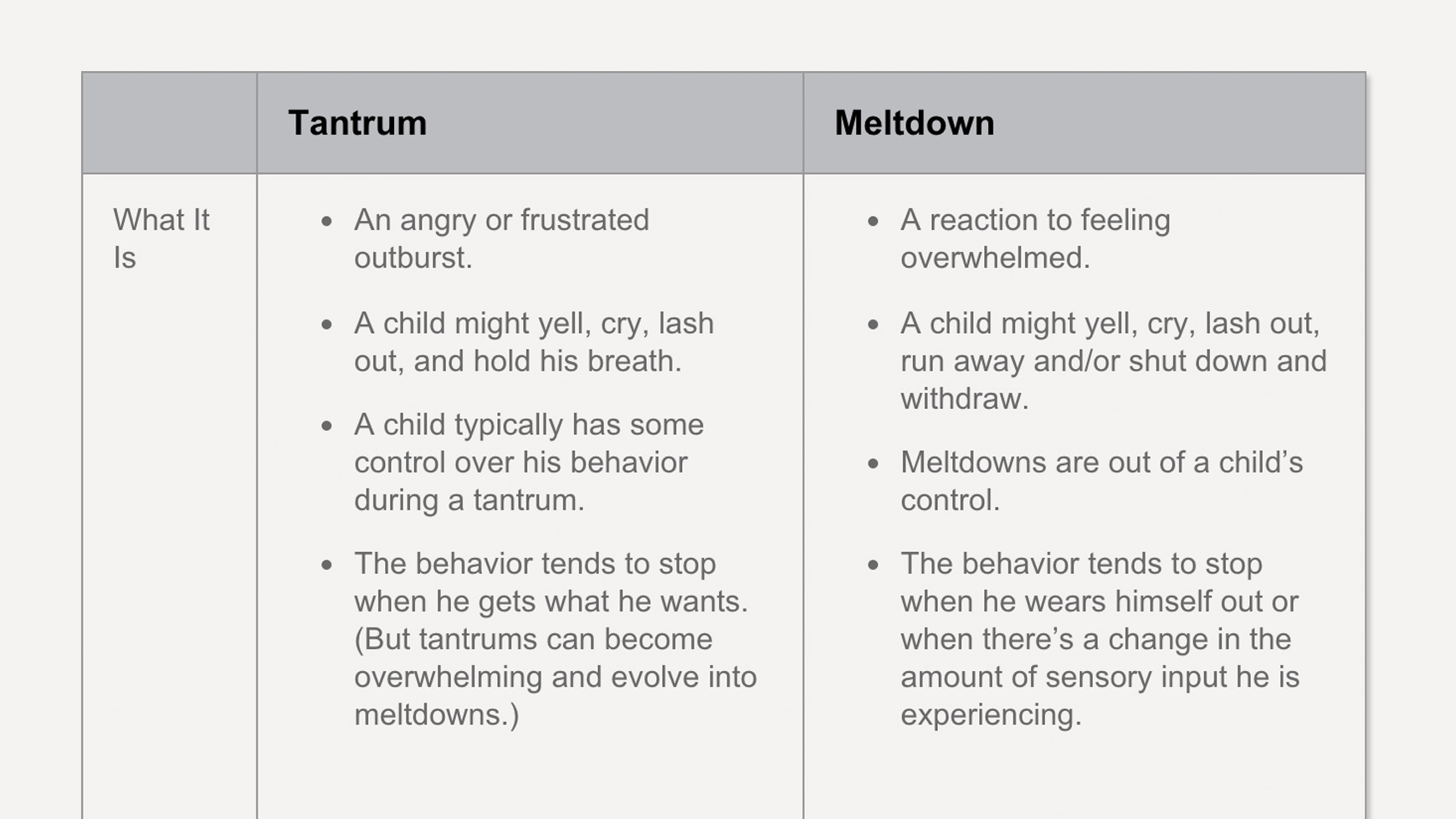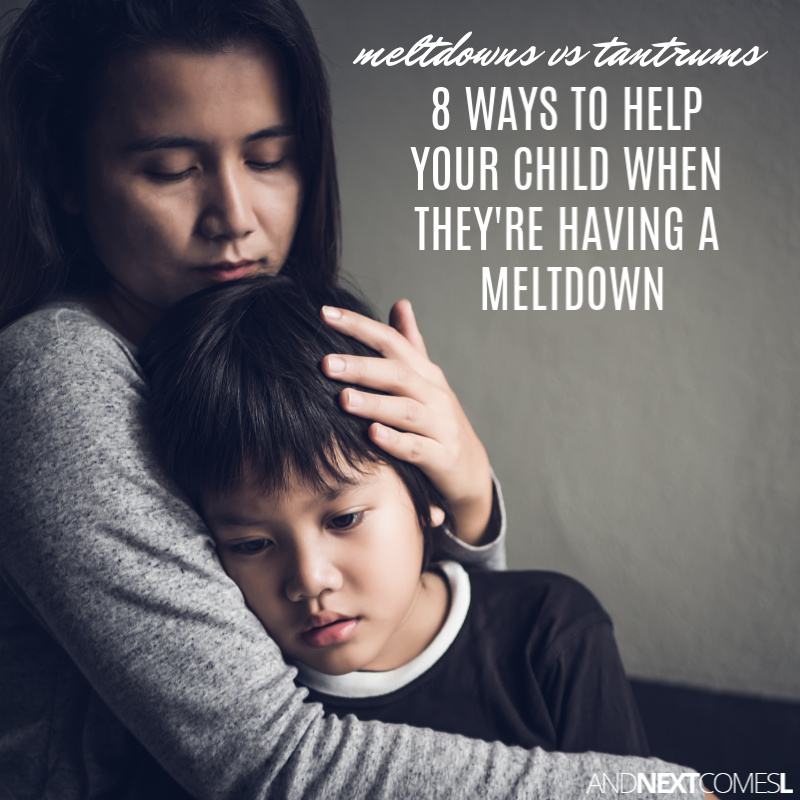
There is no stopping a meltdown in progress.Įnding the Tantrum Versus Ending the MeltdownĪll parents learn the quickest way to end a toddler’s tantrum is to give in to the demands. The goal for the support person at the height of a meltdown is to ensure safety, knowing the meltdown will continue until the energy is spent. In fact, safety becomes the focus of attention during the autistic meltdown. The individual engaged in a meltdown does not stop to check for an audience.īecause the autistic meltdown is the body’s attempt to gain equilibrium by expending energy safety concerns often loom large.

In fact, if the adult in charge walks away during a meltdown the meltdown will continue until the energy is spent. In fact, the toddler will often pause the behavior, checking to make sure the parent is still there, and then resume the temper tantrum behavior.Īutistic meltdowns will occur with or without an audience. If there is no audience the behavior will stop. For example, a toddler engaged in a temper tantrum will only display the behavior if someone is near enough to see or hear the behavior. This plays out with some noticeable differences. While tantrums are a goal driven choice a toddler makes, autistic meltdowns are not goal driven. Just as the water must overflow the glass when there isn’t enough room for it in the glass, so must so must energy be spent or worked off to reduce the overwhelm so life can again becomes manageable.īehavior During the Tantrum Versus Behavior During the Meltdown There are many ways to prevent meltdowns – to prevent the glass from filling up, but once a meltdown has started there isn’t a way to make it stop at wish – we cannot undo the overflow once there is too much water for the glass. As the sensory input accumulates the glass fills. The glass is like the autistic person and the water is like the sensory input. Imagine a glass that is filling with water. Because the processing of the autistic brain often is not in sync with real time, anything from too many choices to not being able to pull up solutions to an in-the-now problem to an intense emotion that is stuck rather than dissipating over time can be triggers for a meltdown. Sensory overload is one way being overwhelmed occurs, but becoming overwhelmed can happen in many other sorts of situations. A tantrum is goal driven behavior designed to persuade the adult in charge to give in to the desires of the youngster.Īutistic meltdowns typically occur as a response to being overwhelmed.

Tantrums in young children typically occur when the youngster cannot have something he wants or cannot do something he wishes to do.

Goal Driven Tantrum Versus Response to Overwhelm Meltdown The strategies helpful for tantrums versus meltdowns are different so it becomes important to understand what you are dealing with to effectively impact the situation.

Here are some things to consider when trying to sort out whether the behavior is a temper tantrum or an autistic meltdown. To the casual onlooker an autistic meltdown and a temper tantrum may appear to be the same behavior. For some autistics they never totally disappear. Autistic children have meltdowns and these meltdowns can happen across the life span. Typically as they master new skills and become more savvy with expanded communication abilities the tantrums dwindle away.


 0 kommentar(er)
0 kommentar(er)
